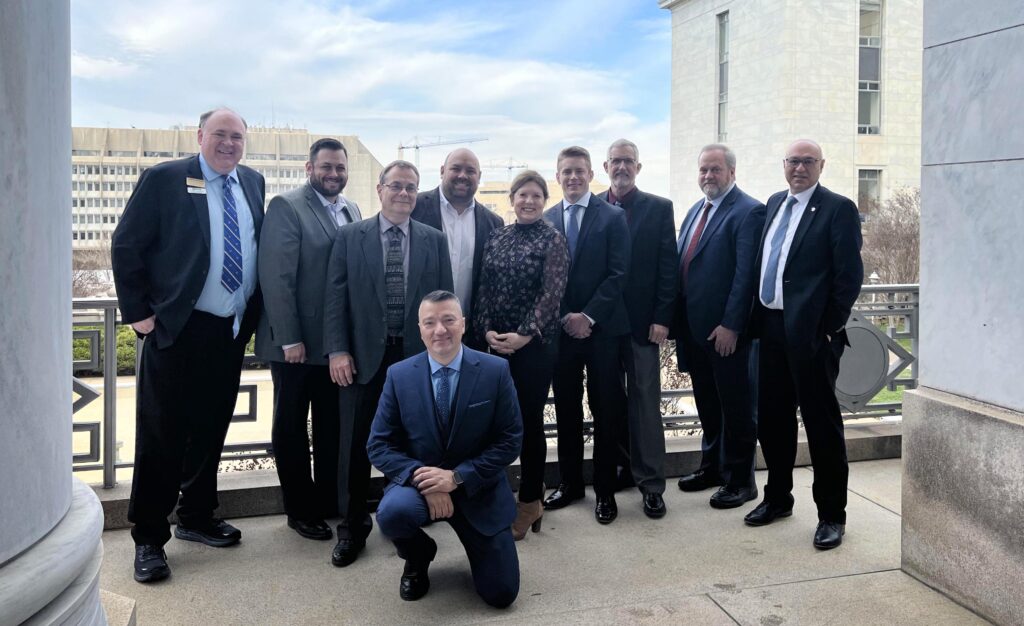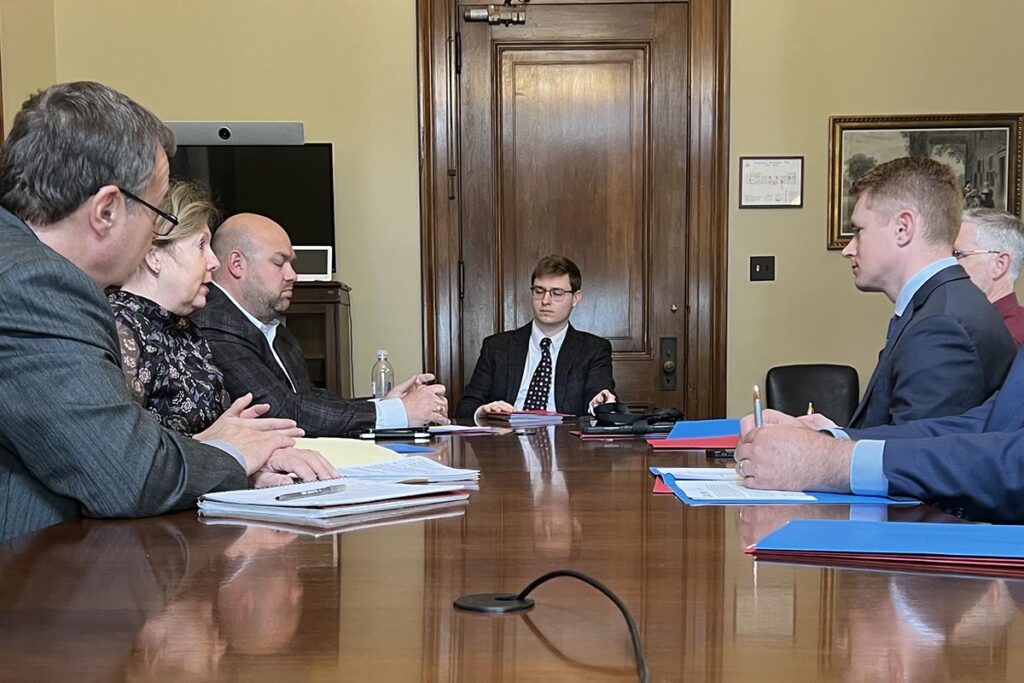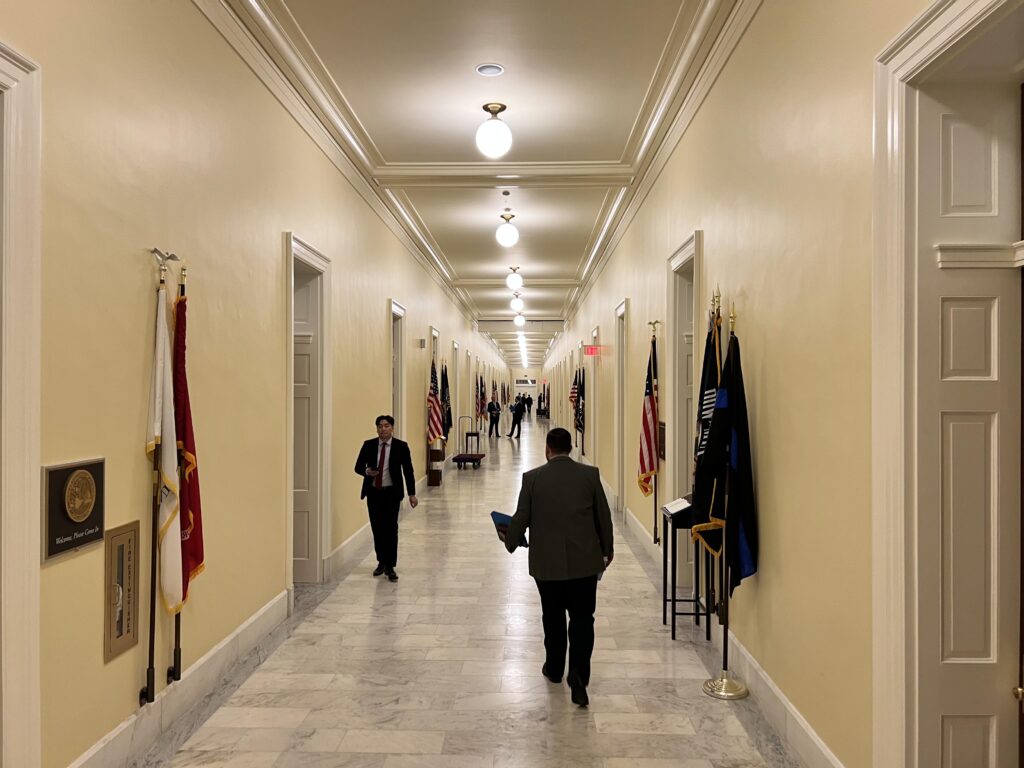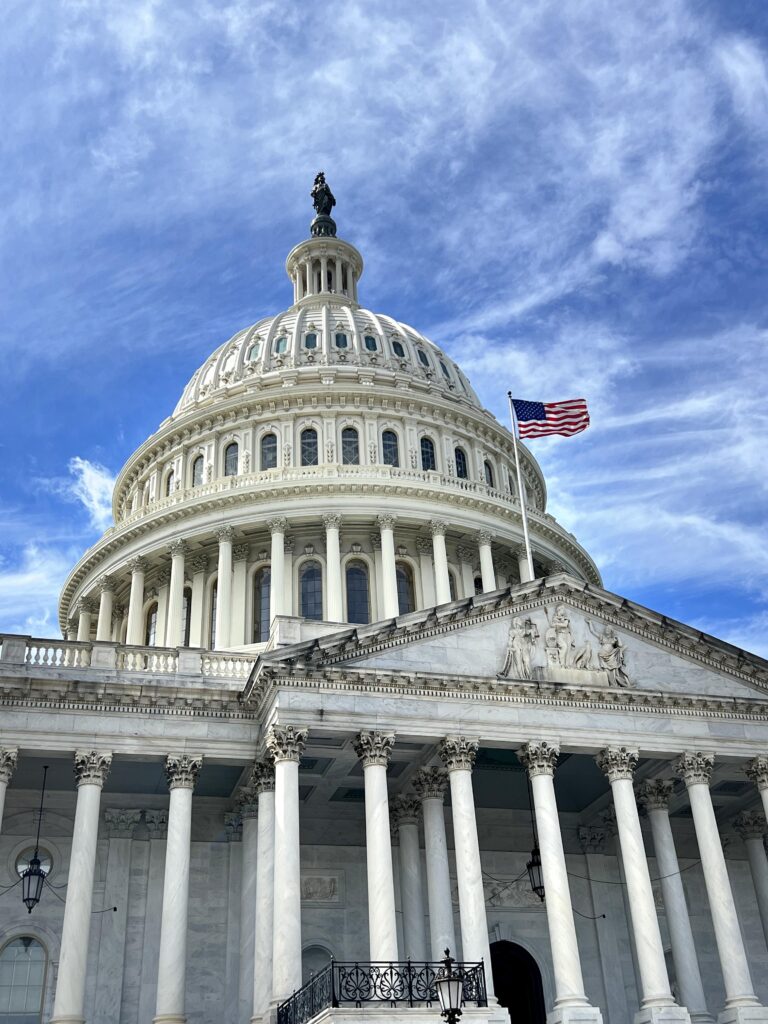What is the FAA Reauthorization Act?
And why should we care?
Every 5 years or so, the FAA (as well as most other federal agencies) must be “reauthorized” by Congress. Reauthorization legislation give that particular agency it’s marching orders for the next 5 years, and gives Congress a chance to update rules that govern the industries covered by that agency.
In the case of the FAA, that means all things aviation. Whether rules about UAS or traditional aircraft, the folks that fly and work on them, or even the facilities that service them, the 2023 FAA Reauthorization Act sets out a roadmap for the FAA to follow for the next 5 years.
Needless to say, now is the time for this industry to get involved! And you DON’T need to be a policy wonk to do this!!!!
Congress only has until September to reauthorize the FAA, so the work has already begun in earnest. And AUVSI provided a way for some in this industry to meet with their representatives in Washington D.C. on 3/22/23. Vic was fortunate enough to be able to join AUVSI leadership in many of those meetings. As were AUVSI/DSPA members Scott Shtofman, Adrian Doko, and Jared Janacek.

We met with the staff of Senators Mark Rubio (R, FL), John Hickenlooper (D, CO), and Representatives Suzanne Bonamici (D, OR) and Marc Veasey (D, TX). We also met with Representative Collin Allred (D, TX).
For the most part, each and every meeting was successful in that they wanted to genuinely hear what our concerns were about how drones and regulations we being implemented by the FAA. And if we had any ideas on what Congress can do to help “urge” the FAA to accelerate implementation of new regulation.
We did have one disappointedly ignorant comment from a staffer. He actually said, “I hate DJI. I’d love to see them wiped off the face of the earth.” In order that the meeting not turn into a lesson in reality (which would have done no good for anyone at the table), Vic simply mentioned how “shortsighted” his opinion about DJI was, and moved on to the next subject. This is what we’re up against when some legislators turn limited scope security issues into overly broad political vendettas.
We just don’t need that kind of attitude about our industry coming from those tasked with helping the FAA regulate it.
And that disappointing attitude is just one reason why we should care.
So what were some of the positive take away from our visit to Capitol Hill? Positive reception and attitudes did actually greatly outweigh that singular instance of ignorance exhibited by one staffer. And to be fair, that staffer did seem interested in our other concerns.
Beyond Visual Line of Sight (BVLOS) was a huge part of each conversation. As was FAA funding, education (for both those who fly drones, as well as our K-12 and higher education institutions), and having Federal Preemption baked into the new reauthorization in clear, precise, and succinct language. Language that even some of our “less politically astute” local council members and staff can understand.
Speaking of which, many of us are familiar with the 2015 State and Local Regulation of Unmanned Aircraft Systems (UAS)
Fact Sheet concerning when and how political subdivisions may regulate UAS usage. The industry (& some FAA insiders) have been after the FAA and DOT legal teams to rewrite that outdated and wishy-washy fact sheet for quite a while. Rumor has it that it’s in the works. Keep you fingers crossed for rapid progress on that. We’ll share more as the information becomes available.
So what was the discussion around BVLOS like?
Everyone who had a chance to talk about BVLOS with the staffers and legislator rallied around the incredibly slow pace of progress being achieved by the FAA when it comes to promulgation of the rule change. The reasons are varied, but they include lack of funding (of course), lack of personnel (see funding…), the overly restrictive limitations, and unreasonable fears expressed by some in the traditional aviation sector.
We mentioned the GAO report to the FAA about their glacial progress of UAS integration into the NAS, as well as the bipartisan Warner (D, VA)/Thune (R, SD) bill that urges the FAA to accelerate the BVLOS rules that currently cripple some operations under 107. We tried to convey that need for Congress to push the FAA to adopt rules put out by the BVLOS ARC (where Kenji was a member), as well as the upcoming BVLOS Task Group (page 101 here) report due to be presented at the next Advance Aviation Advisory Committee (AAAC) meeting schedule for April. Vic was the co-lead, along with David Messina (CEO, FPV Freedom Coalition) of Subgroup 1, which put together the section of the report dealing with short distance (under 2 miles) Extended Visual Line of Sight (eVLOS) flights, and how they can be done easily and safely.
We mentioned to that we met with that 100s (1000s?) of these flights take place every week, virtually each with an impeccable safety record. Whether those flights are standard mapping or creative gigs, or FPV non-VO flights by recreational operators, we’ve yet to see more than a handful of issues.
Now we neither support nor condone the reckless range tests, and the unsafe long range BVLOS flights we see so often on YouTube and other social media. But with the correct safety mitigations and crew training in place, many of these flights can be conducted easily and safely. There is no reason these should not be taking place right now under legal guidelines.
The FAA must be allowed to set the guidelines and enforce actions against those who fly recklessly. But they must also be required to allow those flights that already take place under safe conditions to come out from the shadows and be used as legal examples for others to follow.
BVLOS is holding this industry back at all levels, and the FAA is taking too long to let us fly legally.

Federal Preemption:
As mentioned, there is scuttlebutt out there saying the FAA’s legal team is working on a new state and local fact sheet. And we strongly encourage the FAA to push this out ASAP. While it may too late to make a difference for this year’s state legislation sessions, we still have those pesky little mosquito-esque fights at the local level annoying our industry all the time.
So in addition to the “upcoming” Fact Sheet, Congress needs to push the FAA Preemption powers by adding that black and white language to the 2023 FAA Reauthorization Act. AUVSI even has some copy and paste language prepared for Congress. They have two alternatives, the first being the most succinct. Their suggestion:
“Amend 49 U.S.C. Chapter 448 by adding at the end the following new section:
§ 44811 PREEMPTION OF STATE AND LOCAL LAWS.—No state or political subdivision of a State may adopt, maintain, enforce, prescribe, or continue in effect any law, regulation, rule, standard, requirement, or other provision having the force and effect of law of any State or political subdivision of a State pertaining to:
(a) Aviation safety at all altitudes of airspace;
(b) Air navigation at all altitudes of airspace; or
(c) Categorization of unmanned aircraft systems.”
As mentioned, copy and paste that into 49 USC 448, and we can wave that in front of the local politicians and say “Show us were we can’t do this…”
Anyone who has spoken at a City Council or State Committee meeting has heard those words in one form or another.
If this can be added to our US Code, we can simply say, “Here ya’ go” and then sit down.

Funding…
Even if we can get some UAS regulation language changes added to the 2023 FAA Reauthorization Act, how can the FAA implement them unless they’re given the resources to follow through?
We all know there is money to be had already in the budget. A fun exercise is to Google “Congressional Pork”, and read the myriad of article and stories about some of those examples of fiscal waste. So why don’t we take that money away from Bridges to Nowhere, or the mating habits of Grand Canyon Tree Squirrels (okay, I made that one up, but it wouldn’t surprise me if something similar existed) and put it to good use helping keep the U.S. airspace the safest in the world, and encourage the FAA to release the shackles of BVLOS imposed on us and delivery drones quickly and efficiently?
Those simple changes to Part 107 or 49 U.S.C. 448 would help build this American Drone Service Provider industry at a much more rapid pace, encourage innovation, and continue to make American small business owners successful in their pursuit of the American Dream?
It sure seems like a better use of tax dollars than writing prurient articles about Grand Canyon Tree Squirrels.
DSPA will put out an article by 4/5/23 discussing ways to get involved with your D.C. Congressional Members, and how to get your point across in a professional and succinct way. We’ll also put out some talking points concerning the Country Of Origin Ban and how it is already affecting the commercial UAS industry, as well as how to find your Congress Critters.
Remember form letters are NOT very affective when contacting Congress. So we won’t be putting one out, but we will give you instructions.

Thanks for your continued support of DSPA. Your dues and donations are used to cover expenses for Kenji and Vic to travel to events like AUVSI Hill Day, AAAC meetings, and other industry events where we can get in front of those who can make a difference to our industry. Your dues and donations help us help you by fighting against unreasonable UAS regulation, whether local, state, or federal.
As always, fly safe. And Fly Happy!



